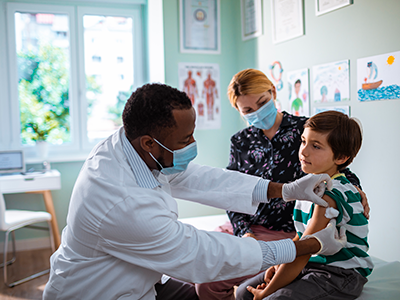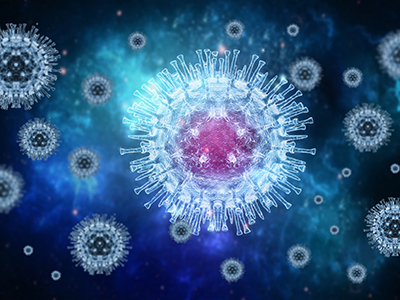Please note: As we continue to learn more about COVID-19, the information in this article may change. You can find our most up-to-date information about coronavirus here.
Even as hospitals and clinics around the country ramp up coronavirus vaccine distribution, newer and more contagious variants of the virus are popping up around the world. We’ve asked Roberta DeBiasi, MD, MS, chief of the Division of Infectious Diseases at Children’s National Hospital, to answer some of your questions about the new COVID variants.
Why are there so many variants all of a sudden?
Viruses are continually evolving and changing. The more circulation there is within a community and globally, the more opportunities the virus has to change and the more rapidly variants emerge. Each time a virus infects a cell and reproduces itself, tiny “errors” may occur by chance when the infected cell reads the “blueprint” for the virus and makes a new copy of the virus, resulting in small changes which we call mutations. Sometimes these mutations do not continue or propagate because they are not advantageous to virus survival. But sometimes by chance, one of these errors can actually make the virus more likely to succeed by increasing its ability to spread from person to person. Since we have seen a large surge in viral transmission across the globe since late November, it makes sense that there have been more opportunities for these changes/mutations to occur and that is why we are seeing these variants emerge now.
Which (if any) variants are immune to the vaccine?
The good news is that even though most of the vaccines that were developed against the original strain of SARS-CoV-2 have some decreased efficacy against the new variants, they are for the most part still effective, particularly against the most predominant circulating variant, the UK B.1.1.7 strain. For instance the Moderna and Pfizer vaccines which have 95% efficacy against the original strain, show no decrease in efficacy against the B.1.1.7 (UK) strain and are still active against the B.1.351 strain (South Africa), even though there is a 2 to 6 fold decrease in a neutralizing antibodies produced. The P.1 Brazilian strain is not widely circulating to date but may be more resistant to vaccines. Many of the vaccine companies are working on making additional vaccines targeting these common variants, in case they become a larger proportion of circulating viruses. The best way to prevent this from happening is to get as many people vaccinated as quickly as possible which will decrease circulation of virus and decrease the likelihood of variants emerging on a bigger scale.
How can we protect against the new variants? Should we be wearing two masks instead of one?
The new variants are a very small proportion of all circulating virus in the United States (<1%). There is no reason to wear two masks instead of one. The best way to protect against the new variants is the same way you protect against the original strain — wear a mask, practice social distancing and get vaccinated as soon as you are eligible with any of the approved vaccines.
Which variants (if any) are more lethal and more contagious?
All of the variants appear to be more contagious with a 25-40% higher infection rate. None appear to be more lethal. However, if there are larger rates of infection, then the overall number of people who end up hospitalized and/or dying from the virus will increase.
Which variants have made it to the United States?
All three of the most commonly reported variants have been detected in the United States. As of February 1, 2021, there have been 471 detections of variants in 32 states, which is a very, very small percentage of overall circulating viruses in the United States. Most states have detected 0-10 of these variants. Florida and California have the most reported (120-160 each), with New York next (41-80); the remainder of states have very few isolated cases.
Is there anything we should worry about with respect to kids?
To date, there is no data to suggest that kids are affected any differently by the variant viruses.
 https://riseandshine.childrensnational.org/wp-content/uploads/2020/11/person-being-vaccinated-feature.png
300
400
Rise and Shine
https://riseandshine.childrensnational.org/wp-content/uploads/2017/11/childrens_riseandshine_logo.jpg
Rise and Shine2025-05-15 07:00:242025-05-23 10:39:33Answers to your questions about the COVID-19 vaccine and booster for children
https://riseandshine.childrensnational.org/wp-content/uploads/2020/11/person-being-vaccinated-feature.png
300
400
Rise and Shine
https://riseandshine.childrensnational.org/wp-content/uploads/2017/11/childrens_riseandshine_logo.jpg
Rise and Shine2025-05-15 07:00:242025-05-23 10:39:33Answers to your questions about the COVID-19 vaccine and booster for children





















Leave a Comment
Want to join the discussion?Feel free to contribute!